Zhejiang Conservatory of Music, where Floating Cornice on the Brook is located, the country's tenth and only newly constructed professional music education college, has adopted the approach of "Flowing Landscape, Hidden Mountain Residence" to create a new spatial prototype of art college construction with more freedom and openness.


Since the campus was built and put into use, the management team of the college decided to declare the whole campus as a 4A cultural tourist attraction. In the purpose of campus micro-renewal, Floating Cornice on the Brook is an important infrastructure for strengthening the public attributes of the middle section of the campus and activating the existing campus space,which helps the campus to expand its identity connotation from the "open campus" at the design level to the "public scenic spot" at the social and ecological level.

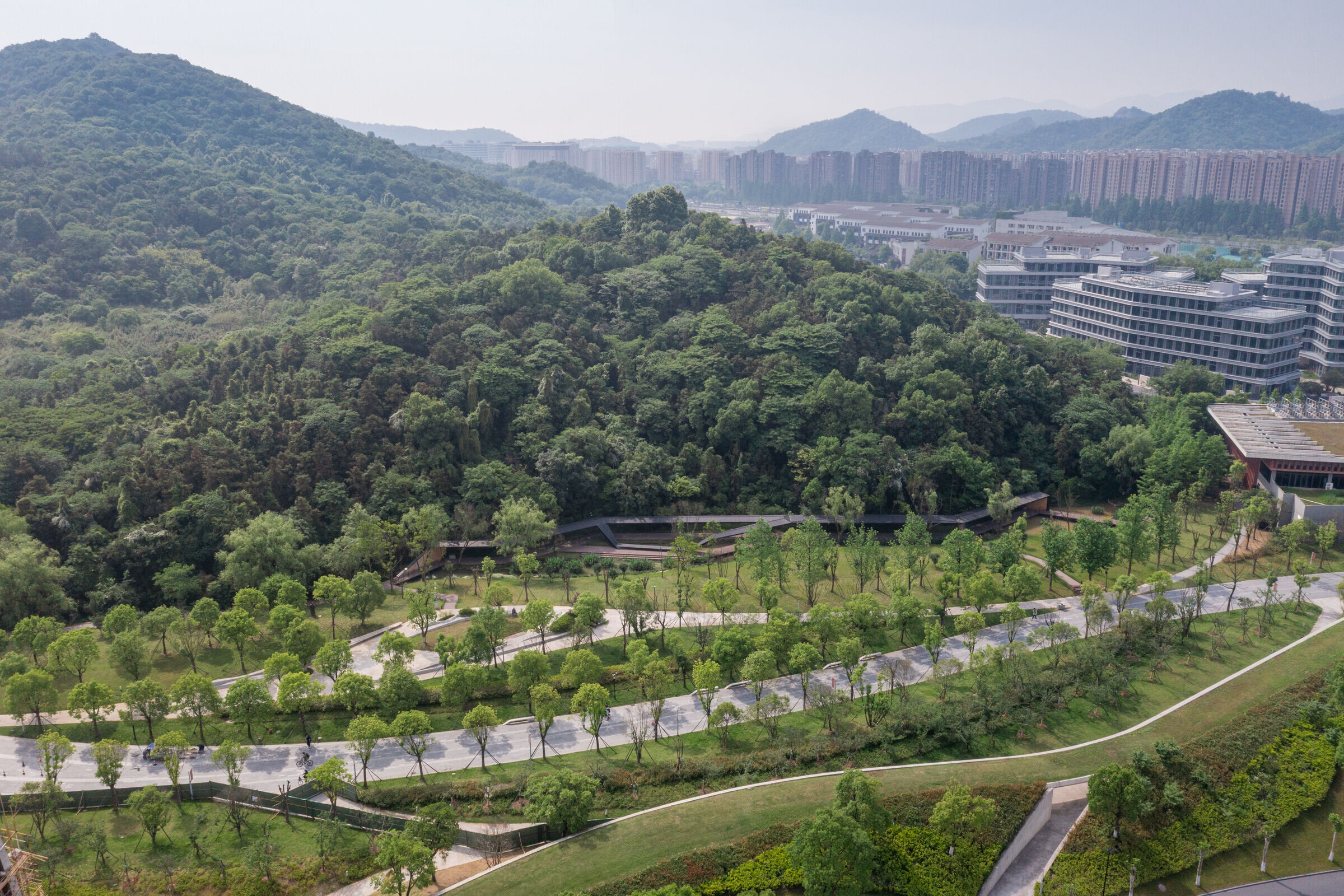
01 Linear Embedding: North-South Connecting
In the middle section of the campus, where the rain gardens along the mountain canal was originally left blank, Floating Cornice on the Brook is embedded as a new linear pedestrian system, linking the music department building to the north with and the campus canteen to the south.
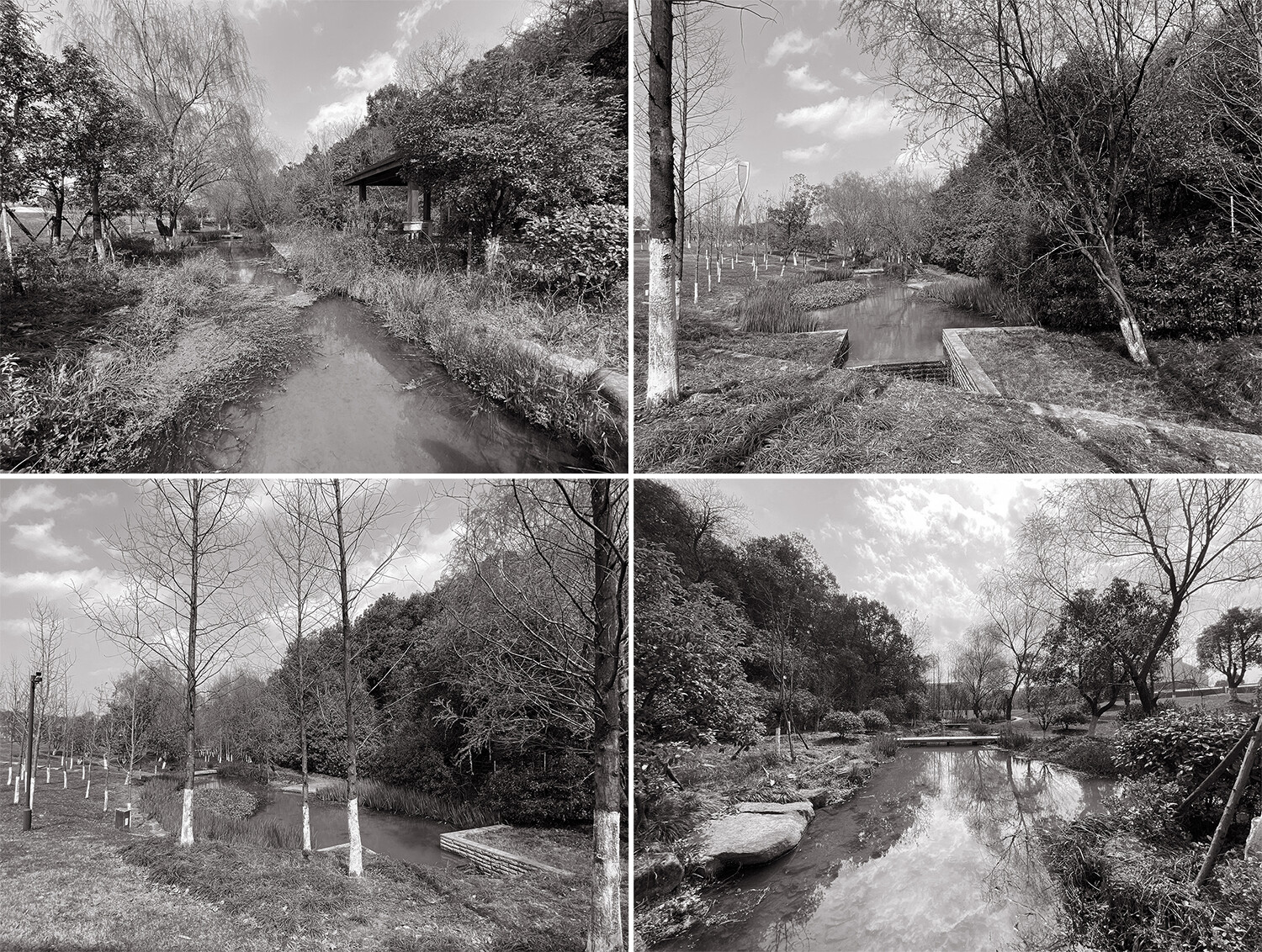


Borrowing from the traditional Chinese painting technique of scattered perspective and translating the spatial elements of "Plank, Corridors, Cornice, Bridges" of classical Chinese gardens, we try to superimpose multiple focal points, spatial forms and behavioral scenes in the longitudinal space of Floating Cornice on the Brook, so that people can gain a circuitous and diversified spatial experience and reading perspective when walking and viewing, aiming to activate the existing inefficient vacant space in this section of campus and improve the campus public roaming experience.



02 Topological Relations: Crossing the Brook and through the Trees
Floating Cornice on the Brook adapt to local conditions to compound by the spatial elements of "Plank, Corridors, Cornice, Bridge", and integrating the behavioral scenes carried by walking along the mountain, paly with water, walking along the brook and winding paths.

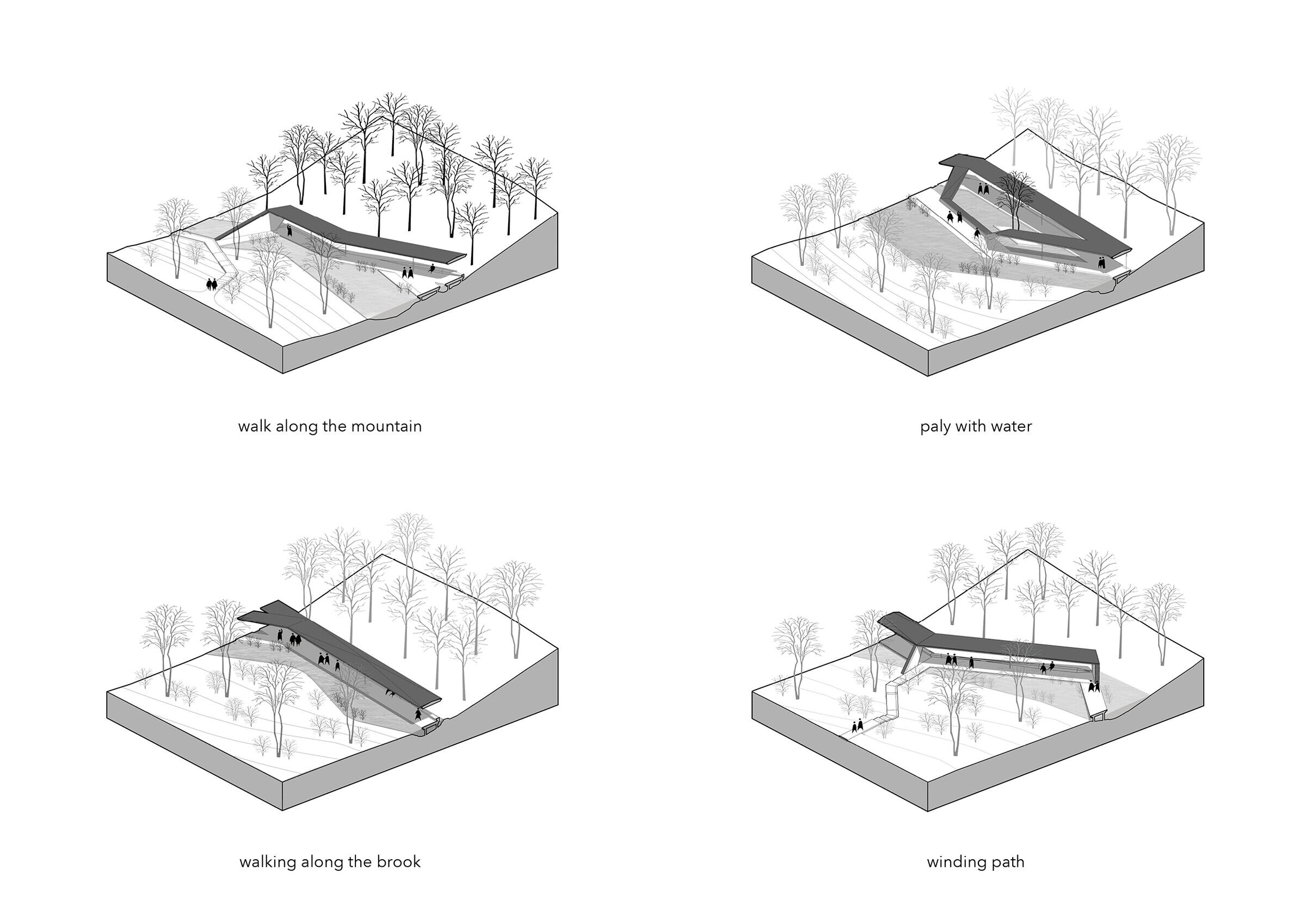

Plank: In order to avoid the disturbance to the original environment of the site, the folding corridor is elevated above the brook, as close to the water as possible, avoiding the native trees in each folding, and fitting the trend of the mountain.


Corridor: roof float on and columns stand on the plank to form a corridor, which bends in accordance with the trend of the mountain edge and the bank, folds middle part into the brook for pedestrians take several steps to sit next the brook. Corridor integrate the functions of sitting, watching and strolling, which creating a shared leisure place.


Cornice: simplify the traditional sloped roof ridge and eaves, smooth the slope difference of double-sloped roof, so that Cornice appears light and unobtrusive. The Cornice are twisted and folded on the Plank to form a bench for lounging and a buttress that defines the beginning and the ends.

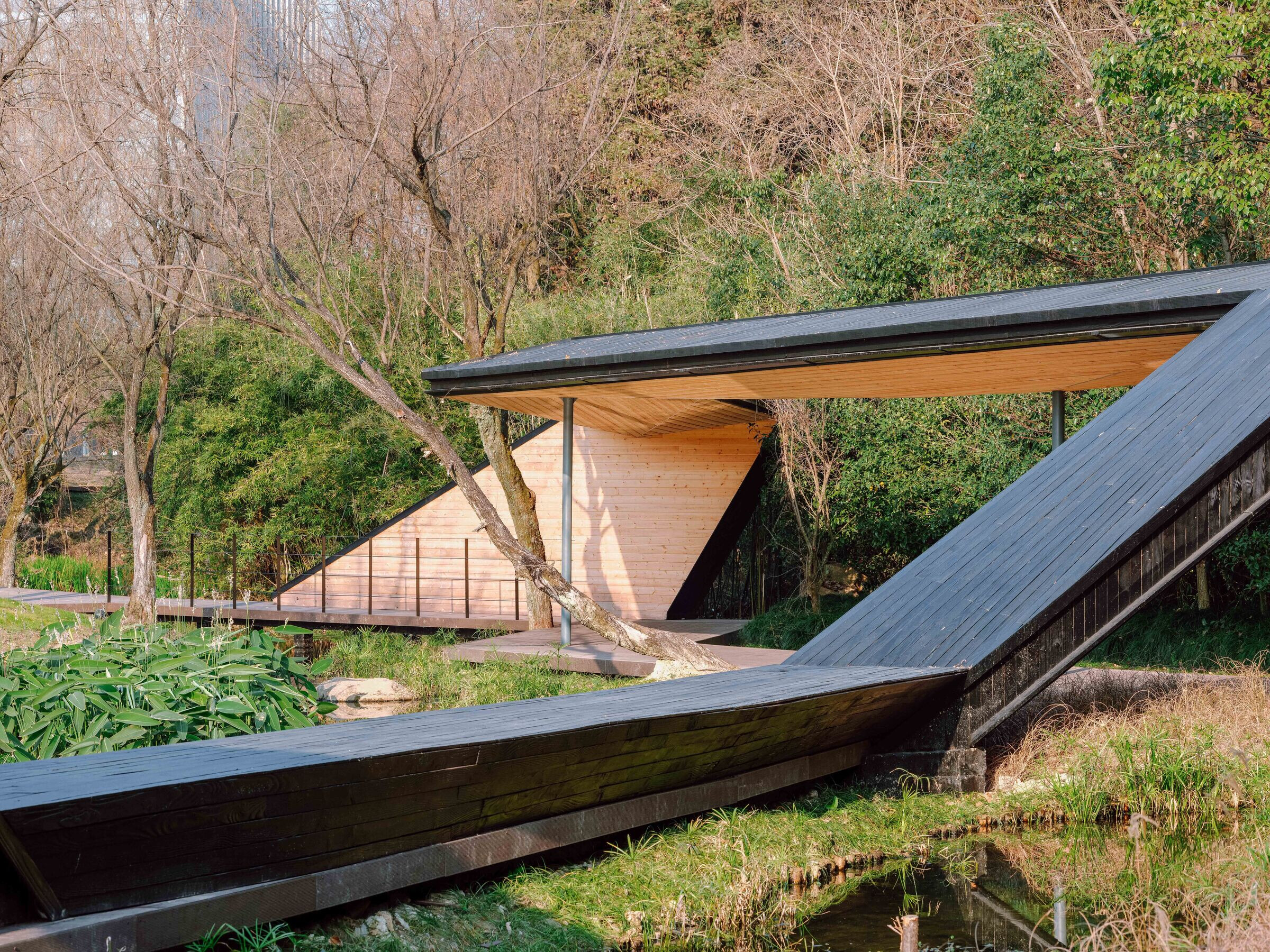
Bridge: The brook forms a pond in front of the campus canteen. A steel bridge with a slight tilt is set up on the pond, cantilevering unilaterally and entering the slope lightly.
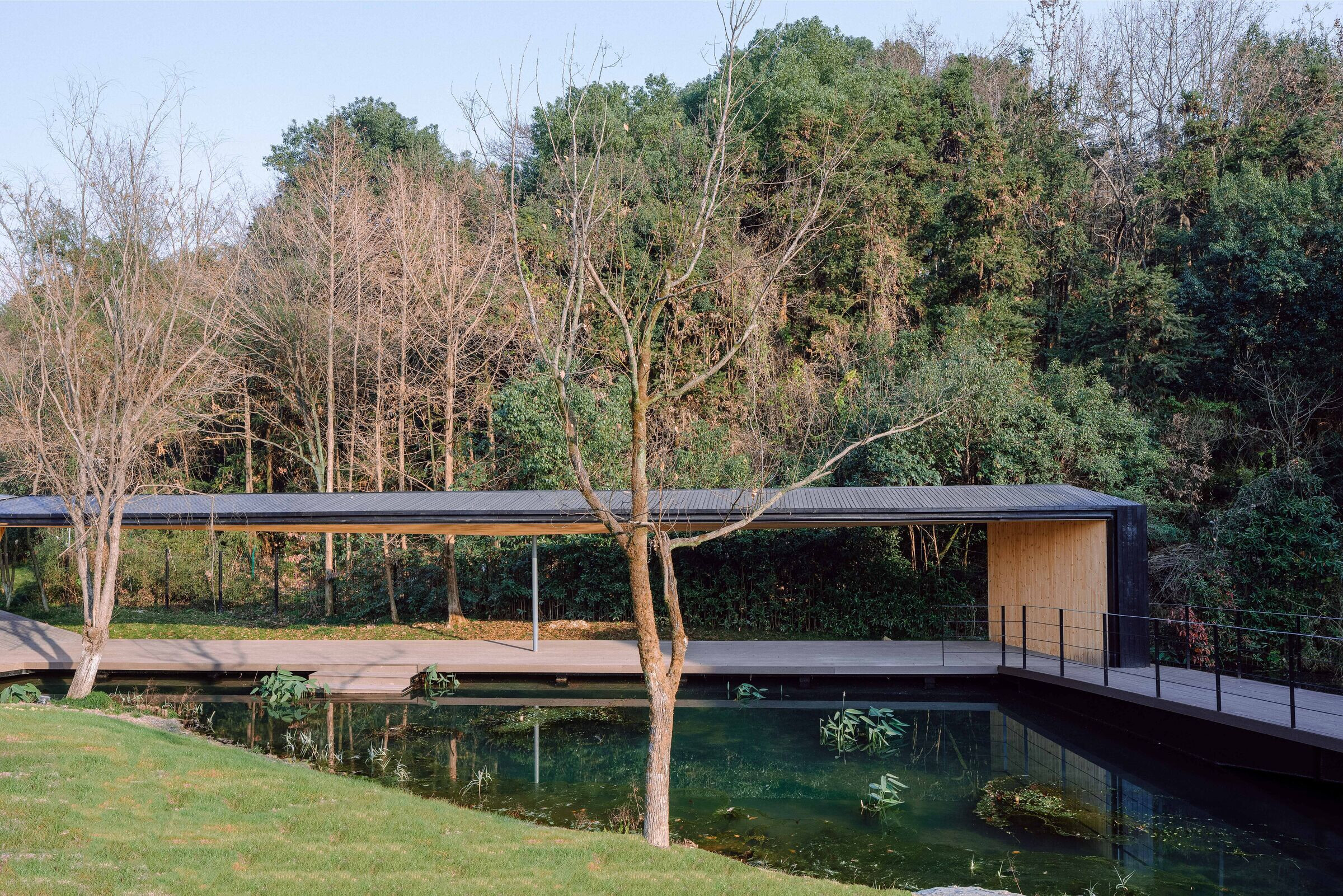
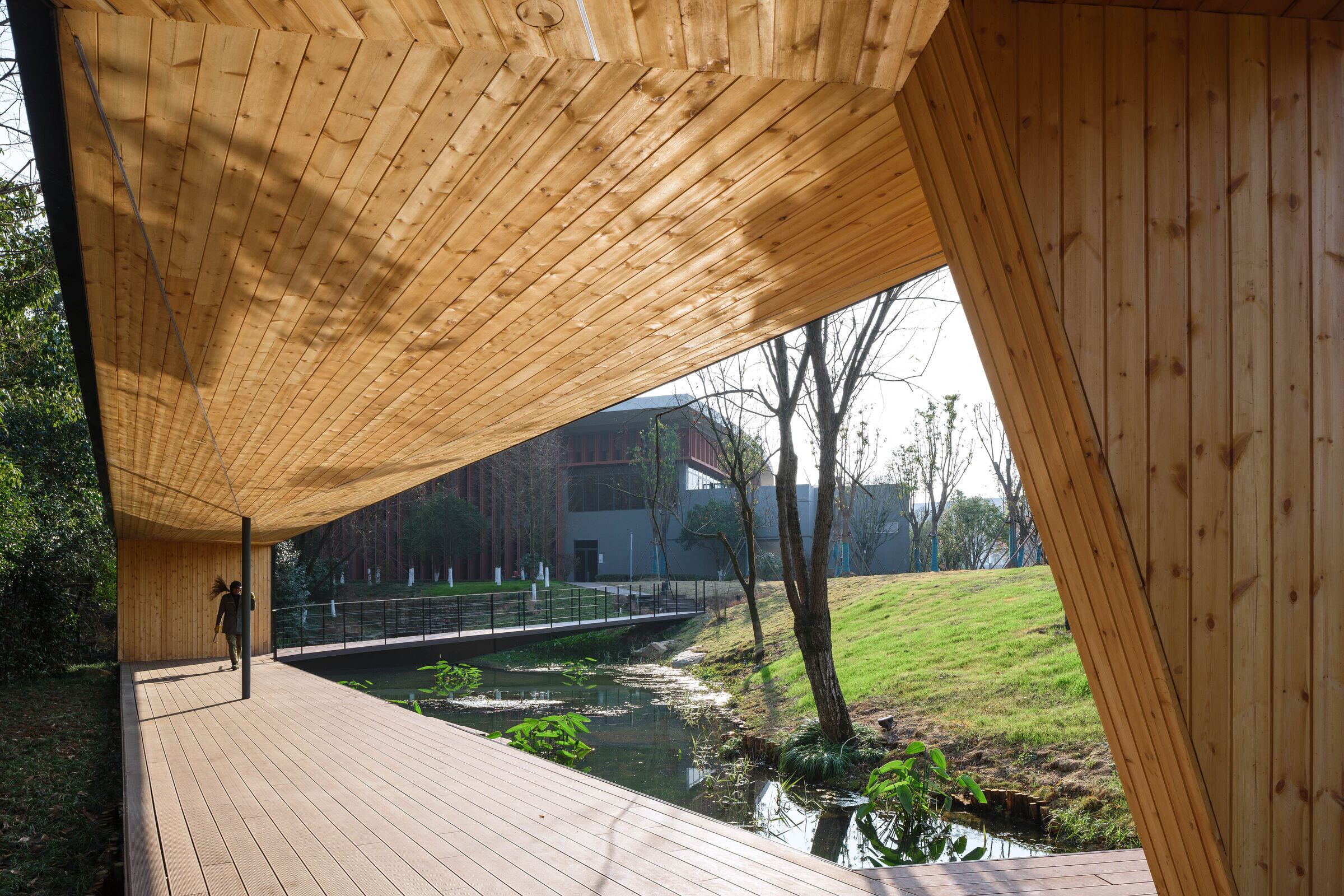
03 Structural Simplification: Void and Hardness
The roof structure of Floating Cornice on the Brook is a box-shaped beam with an I-shaped beam and the roof is an abstract form of double slope and four-corner polygonal roof. Corresponding to the four corners polygonal roof, the ceiling forms an inverted pyramid.




All the fulcrum points converge at the apex of the pyramid, so that the roof that is north-south length of 113 meters is supported on the ground by only five slender steel columns. Vertical structural members are thus minimized use. Clear node of fold line and segmental assembled prefabricated steel structure make Floating Cornice on the Brook show a state of hardness.
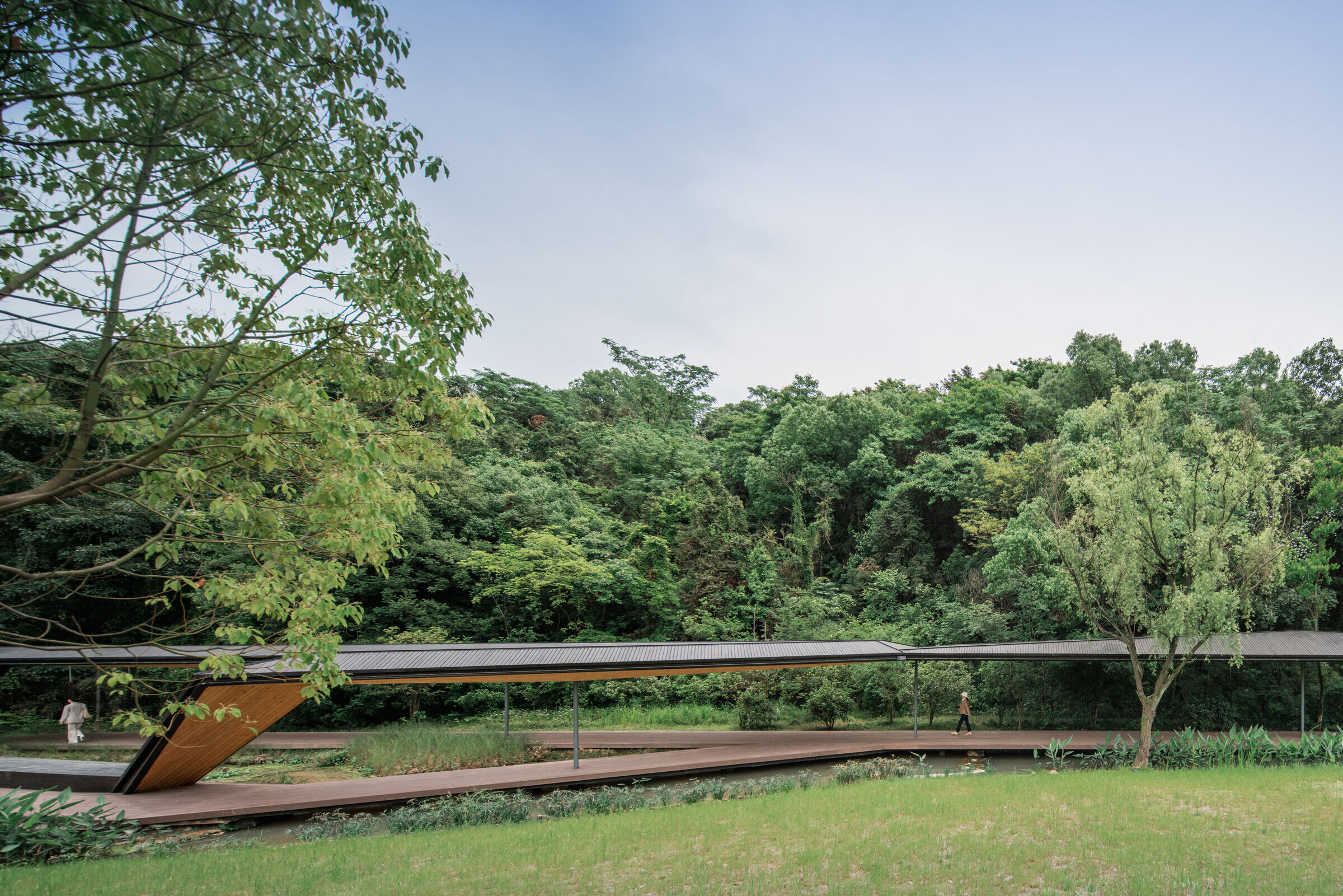

04 Mapping of Materials: the Expression of Outside and Inside
Floating Cornice on the Brook uses wood to convey two forms of expression of a single material. The dark burnt fir board is used for the roof covering and seats, which is resistant to natural corrosion and hidden the folding corridor in the woods. The ceiling and corridor buttress are made of primary red cedar wood, presenting natural color. Inside the corridor, pedestrians are accommodated with warm texture.




05 Eco-Friendly: Sponge Landscapes
As an important node of the ecological axis of the campus, Floating Cornice on the Brook, with the concept of rain gardens and minimal intervention on the site, the native campus water system, trees and grasses are preserved and incorporated into the design of the space.
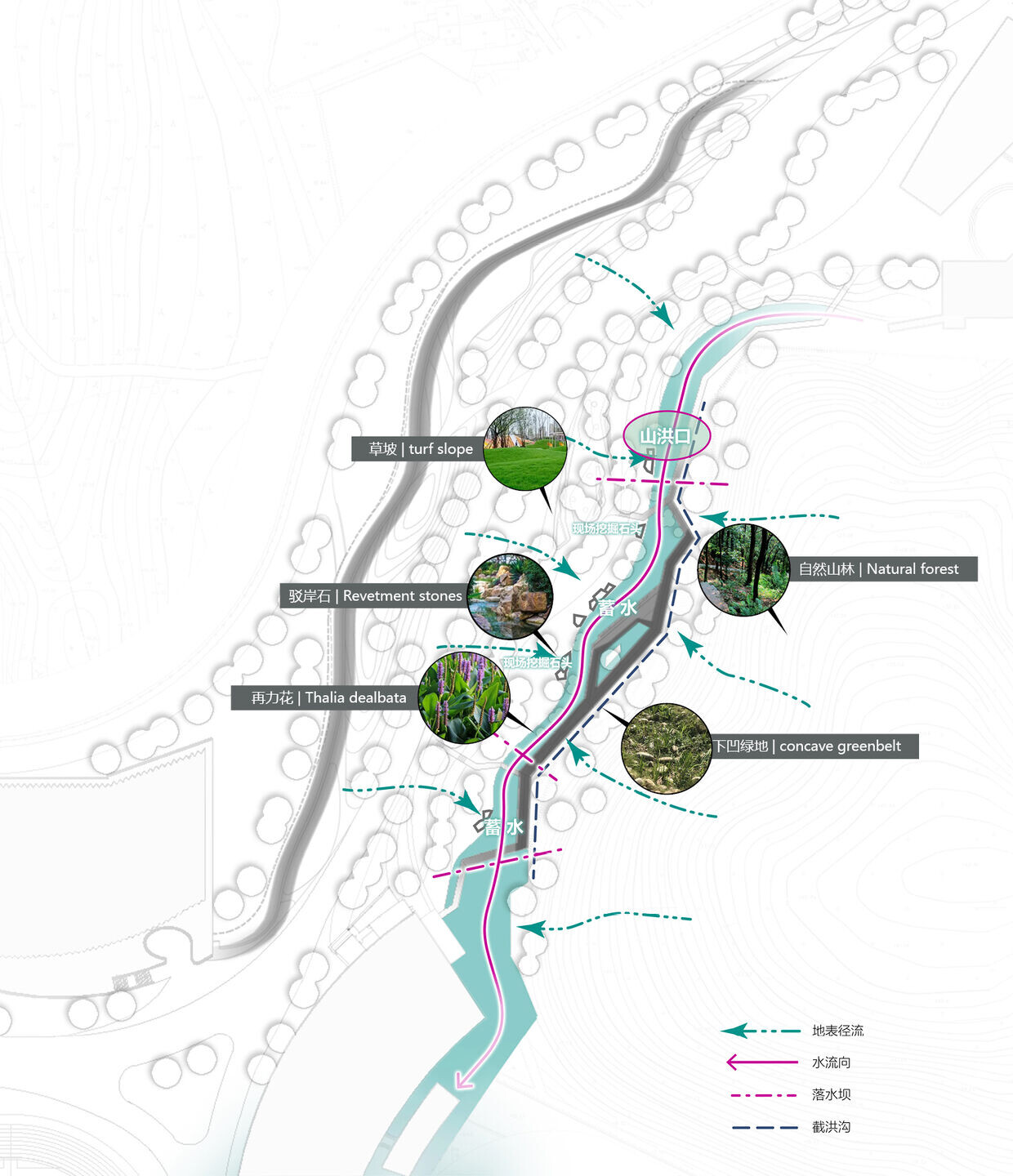
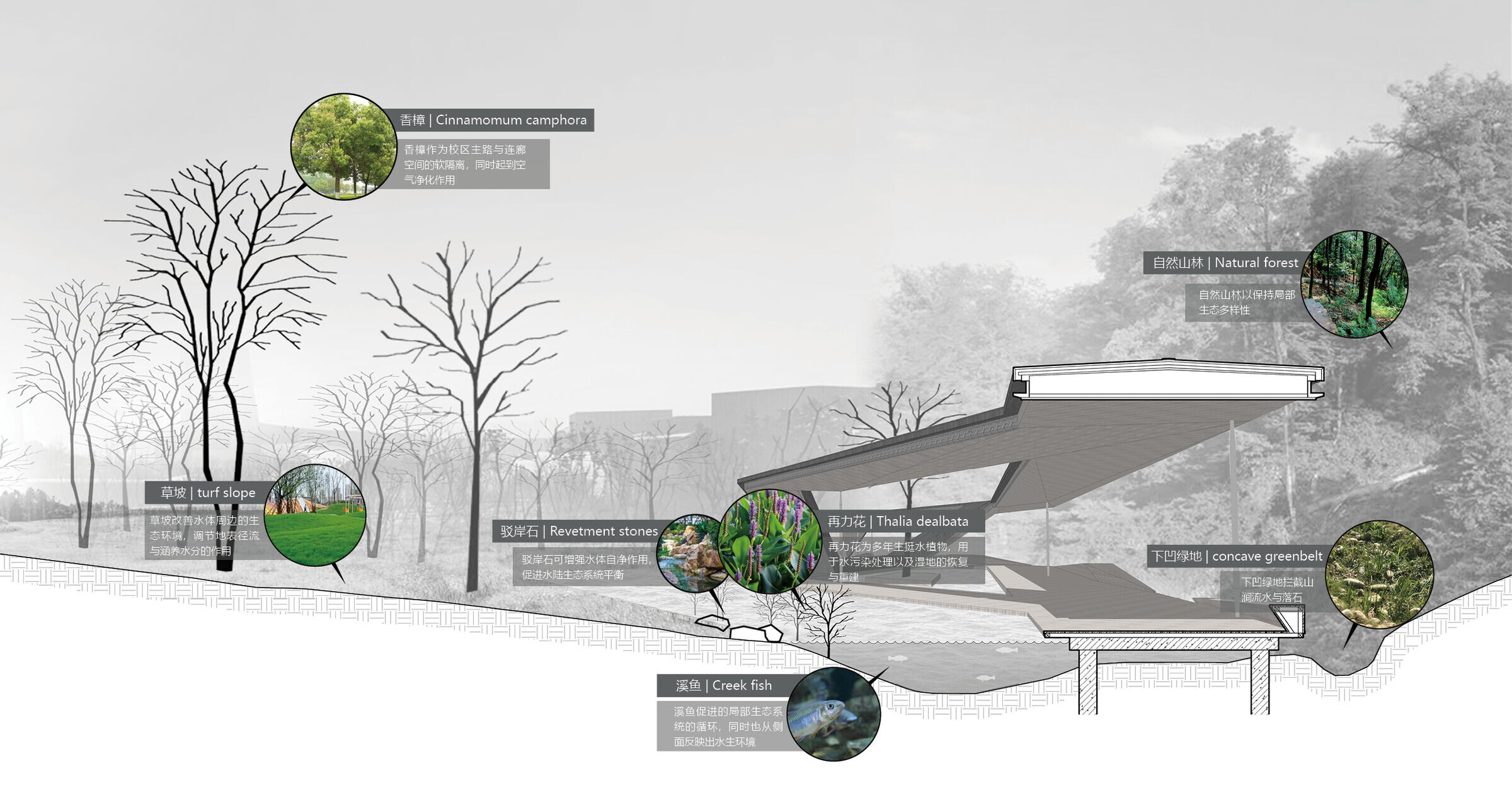

There is a natural transition between the Brook and the traffic and pedestrian roads in the middle of the campus as well as the Cloud Corridor in the Valley of Music through the lawn buffer zone, bush buffer zone and the brook landscape belt. Combined with the design of the corridor without contact with water, the natural gentle slope on both sides of the corridor enters the water by steps on brook bank without disturbing the growth of aquatic plants. Through the comprehensive purification of plants and sand, the water quality of natural precipitation can be improved, and the water gradually infiltrated into the soil to conserve groundwater and supply landscape water. A campus sponge landscape that combines ecological sustainability with landscape art and behavioral engagement has been built.




06 New Chapters of Old Songs: Campus open to public
Floating Cornice on the Brook serves teachers and students with the improved campus infrastructure, and integrates natural resources and seasonal landscape scenes to benefit the public. With new forms, structures and materials, it forms an interesting east-west dialogue with the original Cloud Corridor in the Valley of Music, completes the linear open space in the middle of the campus, and connects the buildings in the north and south areas. Thus, a public culture and art space that is open and shared with the city and permeated with the nature is formed.

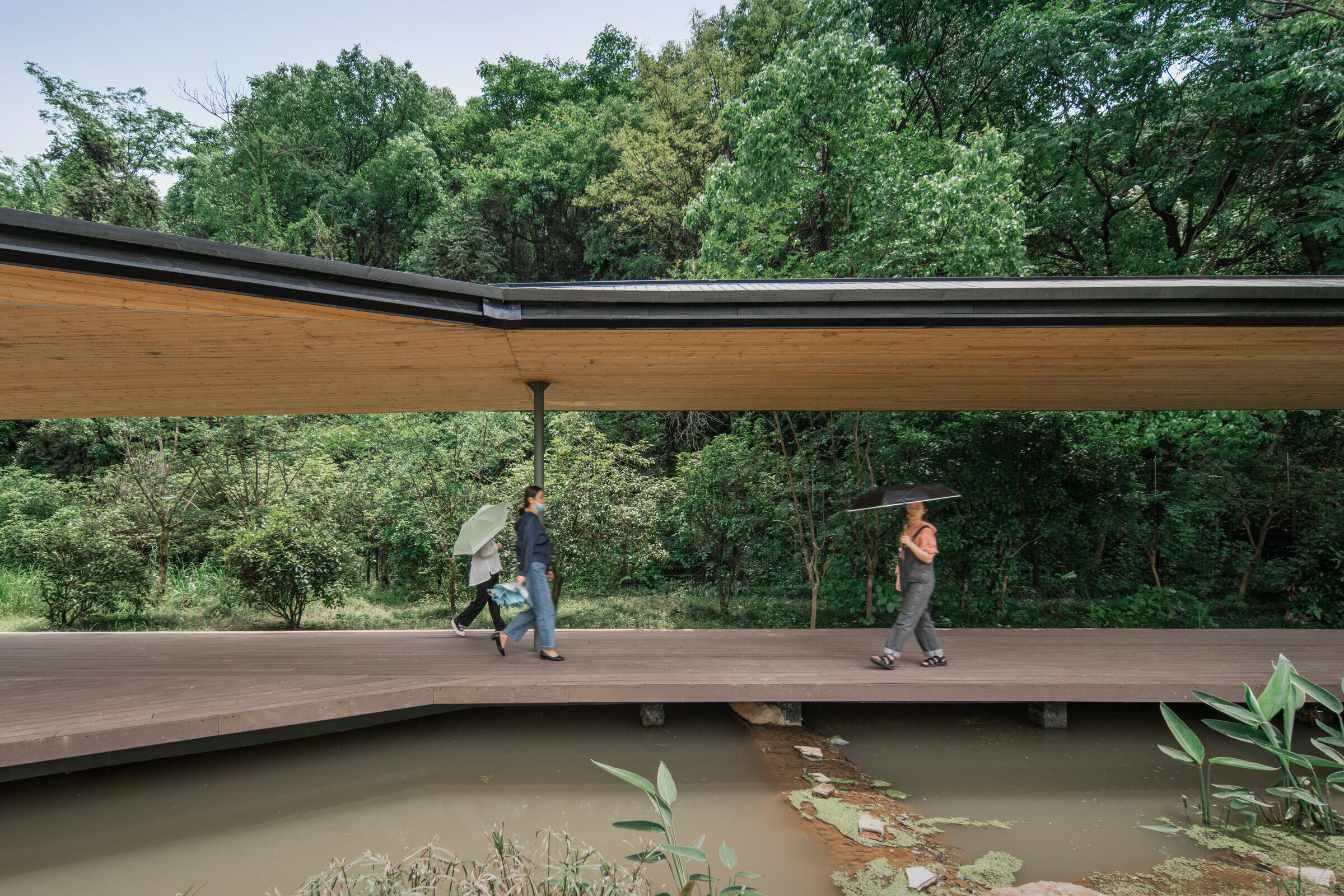
Being open for use over the years, Zhejiang Conservatory of Music has held many music and art activities for the public. Within the macro scale of the art park, Floating Cornice on the Brook improves the campus infrastructure and artificial ecological environment by constructing a natural rhythmic walking corridor, benefiting various public groups. In the microscopic scale of regional ecology, it is a rest space based on biodiversity.
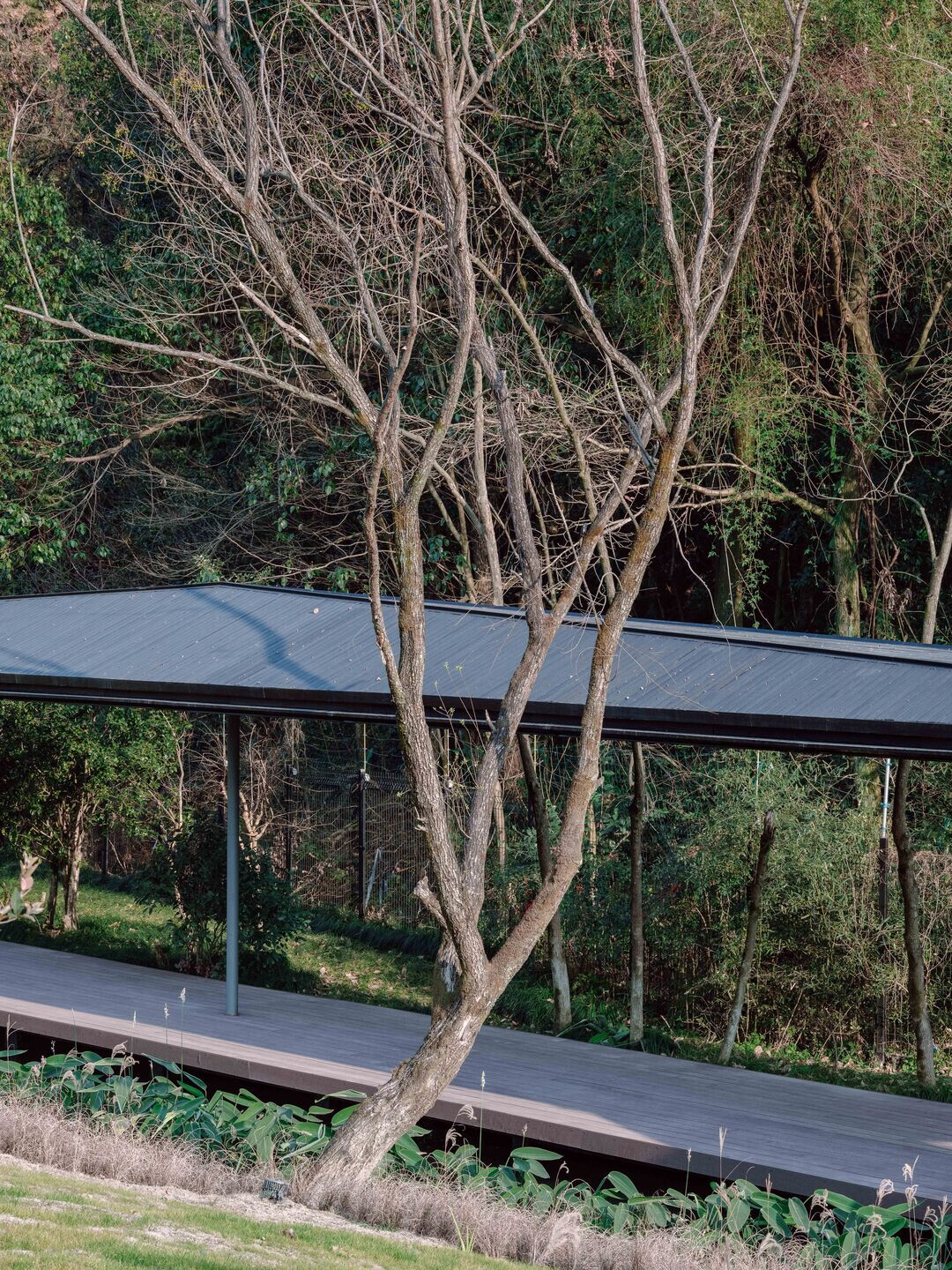
Project Name: Floating Cornice on the Brook of Zhejiang Conservatory of Music
Location: Hangzhou, Zhejiang
Design Firm: line+ & gad
Chief Architect / Project Principal: Zhu Peidong
Chief Landscape Designer: Li Shangyang
Design Team: Sun Xiaoyu, Zhou Yang (Architecture); Jin Jianbo, Zhang Wenjie, Chi Xiaomei (Landscape)
Floor Area: 409 Square Meters
Design Time: 2020.7-2020.9
Construction Time: 2021.4-2021.9
Client: Zhejiang Conservatory of Music
Structural Design Firm: Zhejiang Greentown Architectural Design Co., Ltd.
Design Team: Li Baozhong, Gao Yi
Structure: Steel Structure
Material: Deep Carbonized Burned Fir Board, Red Cedar Board with Anticorrosion Treatment
Photography: Zhu Runzi, line+, Yao Li























































